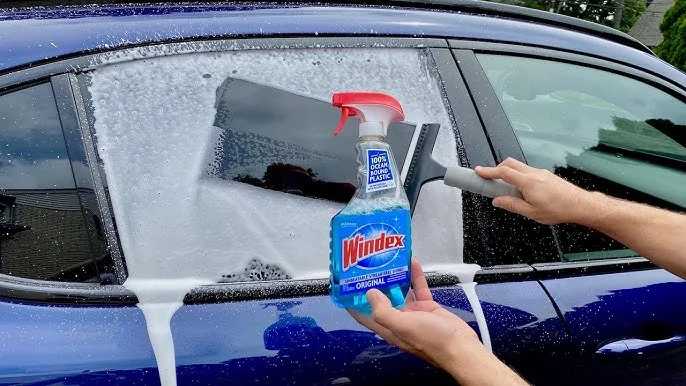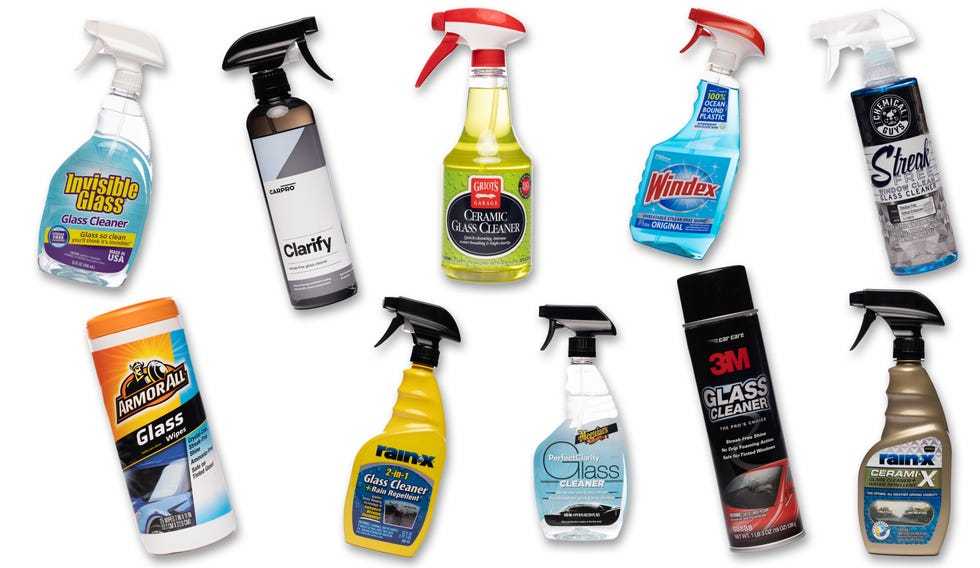To quickly restore clarity to your auto glass, start by cleaning the surface thoroughly, then use a glass polish and a microfiber cloth to buff out scratches and restore shine. Make sure to use the right polishing products and techniques for the best results. With a little patience and the right steps, your windshield can look like new in no time!
Polishing auto glass is a simple way to eliminate scratches, water spots, and haze that can impair your vision while driving. Whether it’s your windshield or side windows, restoring their clarity can significantly improve your driving experience and safety. This process is affordable, easy to do at home, and requires only a few basic supplies. Understanding the proper techniques will help you avoid damaging your glass and achieve a smooth, shiny finish. So, if your auto glass has lost its sparkle, don’t worry — with a bit of effort, you can bring back that crystal-clear look and see the road ahead more clearly.
How to Polish Auto Glass: A Comprehensive Guide
Polishing auto glass is an effective way to restore clarity and improve the appearance of your vehicle. Proper polishing can eliminate minor scratches, remove stubborn stains, and make your windshield or windows look like new. In this guide, we’ll go through each step carefully so you can achieve professional results at home.
Understanding the Importance of Auto Glass Polishing
Auto glass polishing not only enhances the look of your vehicle but also improves safety by increasing visibility. Over time, dirt, debris, and environmental factors cause glass to become cloudy or scratched. Regular polishing helps maintain clear sightlines and prevents minor damages from worsening.
Materials and Tools Needed for Polishing Auto Glass
Before starting, gather everything you’ll need to make the process smoother. Here is a list of essential materials and tools:
- Automotive glass polish or rubbing compound
- Microfiber or soft polishing cloths
- Electric or handheld buffer/polisher
- Sandpaper with varying grits (2000, 3000, 5000)
- Water spray bottle
- Masking tape
- Protective gloves
- Eye protection
Preparing Your Vehicle for Polishing
Clean the glass thoroughly before starting. Use a gentle glass cleaner and a clean cloth to remove dirt, dust, and grime. Ensuring a clean surface helps polishing materials work more effectively and prevents scratching.
Next, protect the surrounding paint with masking tape. This step avoids accidental damage and keeps the process neat, especially around edges and frames.
Step-by-Step Process to Polish Auto Glass
1. Inspect the Glass
Look closely at the glass for scratches, stains, or cloudiness. Identifying specific issues helps determine if polishing or sanding is necessary. Keep in mind that deeper scratches may require professional repair.
2. Start with Water and Light Abrasion
If minor scratches are present, begin by spraying water on the glass to lubricate. Use a soft cloth and light circular motions to remove surface debris.
3. Use Sandpaper for Deeper Scratches
For scratches that do not come out with gentle polishing, lightly sand the area with fine-grit sandpaper (around 2000 grit). Keep the surface wet to avoid overheating and causing more damage.
Sand in a circular motion, applying gentle pressure. Regularly dip the sandpaper in water to keep it moist and prevent scratches from worsening.
4. Apply Automotive Glass Polish
Use a small amount of glass polish or rubbing compound on a microfiber cloth. Work the polish into the glass using circular motions. Be thorough but gentle.
If using a buffer, set it to a low or medium speed to avoid applying too much pressure, which could damage the glass.
5. Buff and Polish
After applying the polish, buff the area with a clean, dry cloth. Use gentle pressure and circular motions. Repeat until the glass appears clearer and smoother.
6. Remove Residue and Final Clean
Wipe the glass with a clean microfiber cloth to remove any remaining polish residue. Use a glass cleaner to achieve a spotless, streak-free finish.
Additional Tips for Best Results
- Work in a shaded area to prevent the polish from drying too quickly and causing streaks.
- Use proper safety gear such as gloves and eye protection to avoid injury from chemicals or debris.
- Don’t rush. Take your time to avoid making mistakes or causing additional damage.
- Test a small area before tackling the entire glass to ensure the polish or sandpaper doesn’t cause excessive scratching.
Common Mistakes to Avoid During Auto Glass Polishing
Many vehicle owners make simple errors that can compromise the quality of their polish. Avoid these common mistakes:
- Using abrasive materials without proper lubrication. Always keep the surface wet when sanding or applying polish.
- Applying too much pressure. Let the polishing tools do the work to prevent scratching or cracking.
- Skipping cleaning steps. Dirt and debris trapped under polish can cause new scratches or streaks.
- Ignoring deeper scratches. Significant scratches may require professional repair, as polishing alone might not fix them fully.
Maintaining Your Auto Glass After Polishing
Once you’ve polished your auto glass, ongoing maintenance is essential to keep it looking its best. Avoid using harsh chemicals or abrasive cleaners that can degrade the polish.
Regularly clean your windows with mild soap and water, and check for new scratches or stains. Applying a glass sealant periodically can also help protect against future damage.
Related Topics to Consider
How to Remove Hard Water Spots from Auto Glass
Hard water spots can be stubborn, but with a mixture of vinegar and water or specialized water spot removers, you can restore clarity. Be sure to follow safety guidelines and test first on a small area.
Best Products for Auto Glass Restoration
Choosing high-quality products matters. Look for trusted brands that offer glass polishes, scratch removers, and sealants designed specifically for automotive use.
When to Seek Professional Help
If scratches are deep, or if you see cracks or chips, it’s safer to consult a professional. They have specialized tools and knowledge to repair or replace auto glass effectively.
Polishing auto glass can be a straightforward process if done carefully and with the right materials. With patience and attention to detail, you can make your vehicle’s glass look clear, shiny, and well-maintained.
HOW TO POLISH AND CERAMIC COAT CAR GLASS !!
Frequently Asked Questions
What are the best tools to use for polishing auto glass effectively?
Using the right tools is essential for achieving a clear, streak-free finish on your auto glass. Start with a high-quality glass polishing pad or a microfiber cloth to gently buff the surface. An electric buffer or polishing machine can help distribute the polishing compound evenly and reduce manual effort. Additionally, select a suitable glass polish or a mild abrasive specifically designed for auto glass to remove stubborn stains or scratches. Always ensure that your tools are clean and free of dirt before starting to prevent scratching the glass surface.
How can I prepare my auto glass before polishing?
Before polishing, thoroughly clean the glass to remove dirt, dust, and any loose debris. Use a glass cleaner and a microfiber cloth for a gentle but effective clean. Ensure the surface is completely dry before moving on to polishing. This preparation helps the polish work more effectively by giving it a smooth surface to adhere to and prevents the introduction of new scratches.
What steps should I follow to avoid streaks and haziness after polishing?
To prevent streaks, work in a shaded area and ensure the glass is cool and dry. Use a clean, lint-free cloth or microfiber towel to buff the glass in circular motions, applying consistent pressure. Wipe away excess polish with a separate clean cloth to avoid residue buildup. If streaks appear, buff the area gently again with a clean section of the cloth until the glass appears clear and glossy. Regularly inspect your work to ensure a uniform finish.
Can I use household products to polish auto glass, or should I stick to specialized products?
It is best to use products specifically formulated for auto glass to achieve optimal results. Household products like vinegar or window cleaners may not provide the necessary abrasiveness or clarity and could leave residues. Specialized auto glass polish contains the right abrasives and cleaning agents to remove minor scratches and stains without damaging the glass surface. Investing in quality products ensures a safer and more effective polishing process.
How often should I polish my auto glass to maintain clarity?
Polishing auto glass once or twice a year is usually sufficient for maintaining clarity, especially if you notice dirt, water spots, or minor scratches. Regular cleaning with a dedicated glass cleaner can also help prevent the buildup of grime that might require deeper polishing. Avoid over-polishing, as excessive abrasive activity can weaken the glass surface over time. Pay attention to the condition of your windshield and schedule polishing sessions accordingly to keep your visibility optimal.
Final Thoughts
To polish auto glass effectively, start by cleaning the surface thoroughly with a glass cleaner to remove dirt and grime. Use a microfiber cloth to wipe the glass gently, ensuring no debris scratches the surface. Apply a glass polishing compound with a clean cloth, working in small circular motions.
Continue polishing until the glass appears clear and shiny. Rinse with clean water and dry with a lint-free cloth. Knowing how to polish auto glass ensures a spotless and streak-free finish that enhances vehicle safety and appearance.



